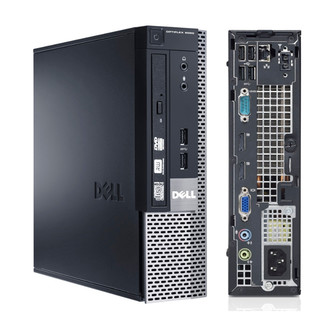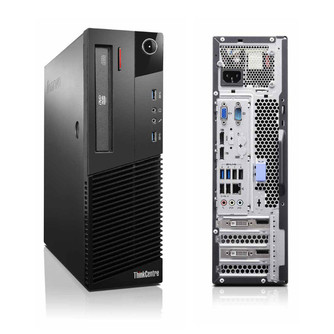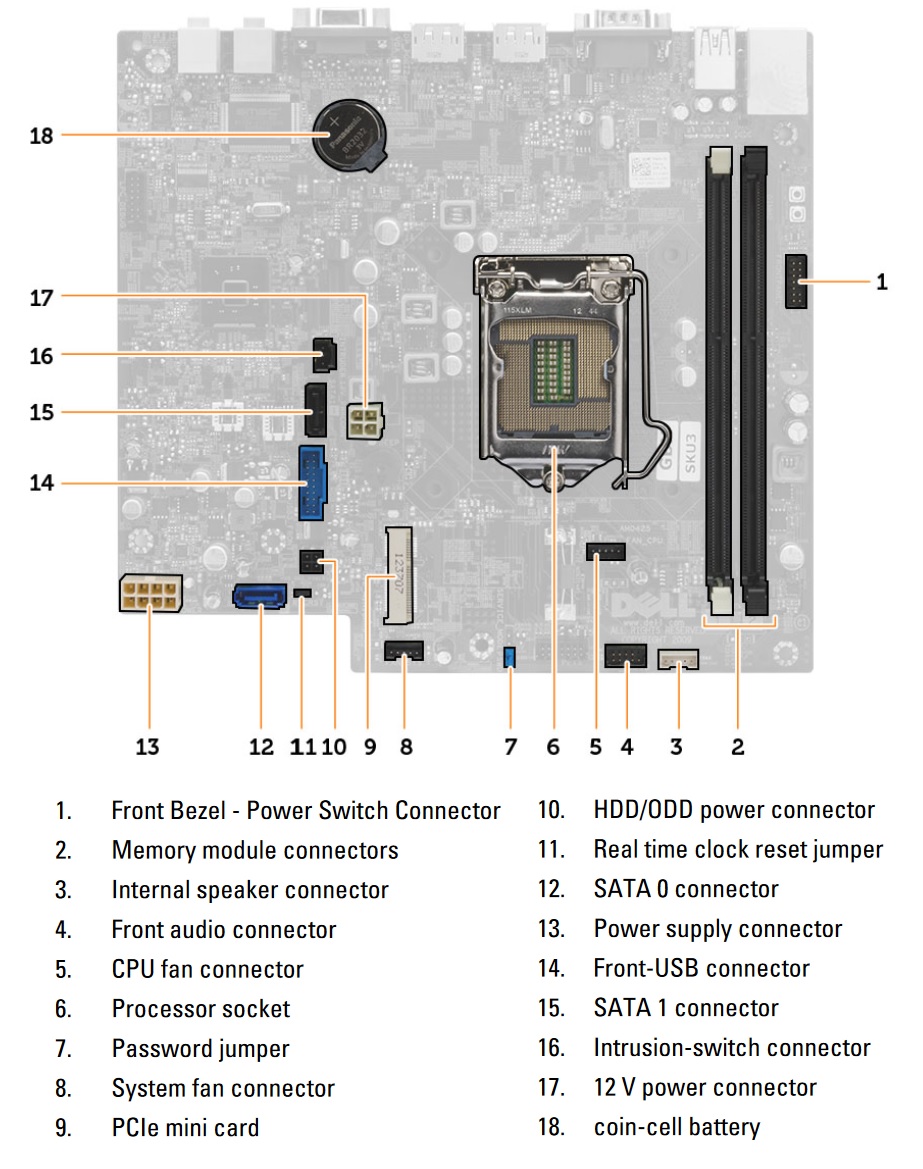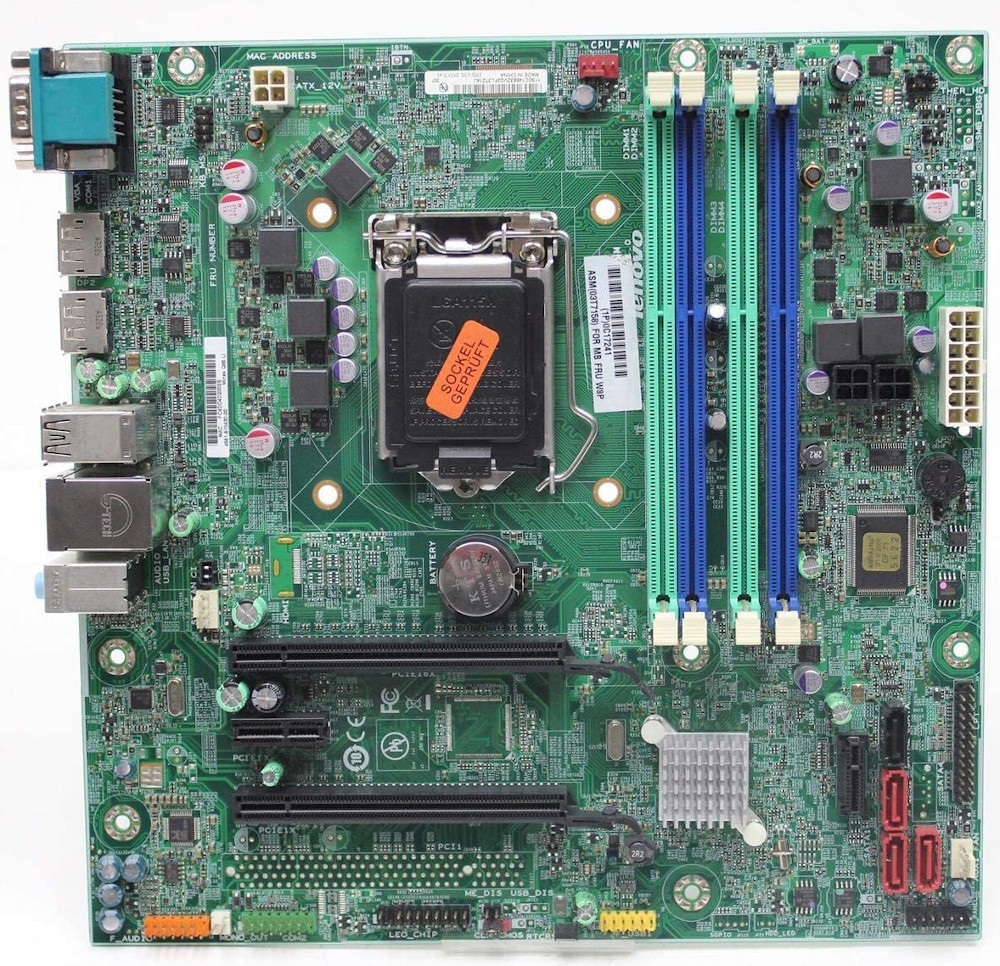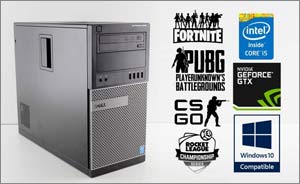Dell OptiPlex 9020 USFF vs. Lenovo ThinkCentre M83 Small Pro
Comparison and Differences
Differences between Dell OptiPlex 9020 USFF and Lenovo ThinkCentre M83 Small Pro
Both computers, the Dell OptiPlex 9020 USFF and the Lenovo ThinkCentre M83 Small Pro, were released during the same year - 2013.
If you are looking for the smaller form factor the Dell OptiPlex 9020 USFF is the right one for you. It is smaller than the Lenovo ThinkCentre M83 Small Pro and will fit more easily under your desk.
Processor
The two models have the same generation of Intel processors. We think that the 4 generation of Intel Processors have enough power to execute all of the home and office tasks that most people will care to do.
Memory
The Lenovo ThinkCentre M83 Small Pro has 4 RAM slots while the Dell OptiPlex 9020 USFF has only 2 slot(s). This is not something to worry about. Just make sure you take it into consideration when planning how much RAM you are going to use.
None of the desktops has an advantage when it comes to the speed of the RAM being used. Both models support RAM speeds of up to 1600. Additionally, if you will be needing a lot of RAM, better go for the Lenovo ThinkCentre M83 Small Pro as it has the ability to run 32 GB of RAM. The Dell OptiPlex 9020 USFF can do a bit less at max 16 GB. Most of the times, this should be sufficient for the majority of users.
Ports
In total the Lenovo ThinkCentre M83 Small Pro has 8 USB ports. The Dell OptiPlex 9020 USFF is inferior in this regard and packs 6 USB ports. In any case, if you miss USB ports, you can always purchase a USB hub. None of the desktop models has a USB 3.1 port (10Gb/s), so if you need a fast connection to your peripherals, like external Solid State Drive, you will need to look elsewhere.
The DisplayPort is usually the more popular video port used with desktops and laptops, while the HDMI is used predominantly in consumer electronics. That's why, it is good to see that both of the models come with a DisplayPort.
None of the models has an HDMI port. If your monitor supports only the HDMI interface, you will need to buy an adapter. Such adapters are cheap so nothing to worry about.
SATA ports are placed on the system board and it is where you connect your HDD, SSD and Optical Disk Drives. More SATA slots will allow you to have more drives running at the same time. In this regard the Lenovo ThinkCentre M83 Small Pro is better equipped as it comes with 4 SATA slot(s), while the Dell OptiPlex 9020 USFF has 2 slot(s).
If you want the fastest transfer speeds for your SSD, an M.2 interface is crucial. Thus, if the M.2 SSD slot is a mandatory requirement for you, go with the Dell OptiPlex 9020 USFF. Sadly, the Lenovo ThinkCentre M83 Small Pro has no such slot, and you will be forced to use the SATA interface instead.
Make sure that the available M.2 slot supports the PCIe (also called NVMe) interface. This is important as there are M.2 slots which support only the inferior SATA III interface. For comparison, the SATA III interface has max speeds of 6Gb/s, while the PCIe 3.0 x4 will support speeds up to 32Gb/s!
Power Supply
Having a Power Supply Unit with high power rating is important, if you are going to use components which require extra power. The Dell OptiPlex 9020 USFF comes with a decent 200 Watt PSU, but the Lenovo ThinkCentre M83 Small Pro has a more powerful one rated at 450 Watts. Choosing either one depends on your specific requirements and use case. Also don't forget that some models might have more than one PSU option - try to always get the most powerful one, especially if you plan to upgrade to a powerful GPU.

